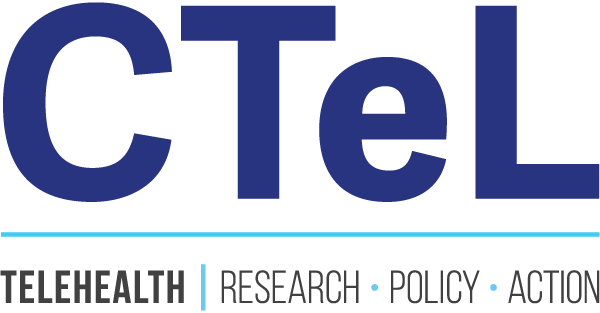Breaking Barriers in Telehealth: How New RPM Rules and Reimbursement Changes Could Shape the Future of Remote Care
The latest session hosted by CTeL on "Remote Patient Monitoring (RPM) and Reimbursement: Navigating the Financial Landscape" offered significant insights into policy updates, financial challenges, and future regulatory actions impacting RPM. Featuring Zach Hochstetler, Vice President of Coding and Payment at the American Medical Association (AMA), the discussion provided a close look at recent changes in RPM protocols and reimbursement structures, with important implications for healthcare providers and payers navigating this evolving landscape.
Policy Revisions and Financial Impacts of the 16-Day Requirement Change
One of the most notable updates recently is the AMA’s revision of the 16-day rule for RPM reimbursement. Traditionally, RPM required 16 days of monitoring data to qualify for Medicare billing—a threshold that was challenging for many patients and providers. According to Hochstetler, recent amendments now introduce an additional code, allowing providers to bill for monitoring that spans between 2 and 15 days. This change comes in response to clinical data indicating that certain conditions, especially those related to COVID-19, can benefit from shorter monitoring intervals. “The new 2-15 day code was created after extensive peer-reviewed studies showed improvements in clinical outcomes even with shorter monitoring durations,” Hochstetler explained. However, the original 16-day code will remain active for patients who need longer monitoring windows.
“The new 2-15 day code was created after extensive peer-reviewed studies showed improvements in clinical outcomes even with shorter monitoring durations,” Hochstetler explained.
While the new code offers flexibility, it won’t take effect until 2026 due to Medicare’s regulatory process. Hochstetler highlighted that Medicare’s rulemaking involves a comprehensive evaluation, public comment, and finalization stages, which creates a time lag between policy approval and implementation. Until then, healthcare providers must adhere to existing reimbursement structures, which could create temporary limitations in RPM service offerings.
Device Cost Challenges and Medicare’s Reimbursement Threshold
An ongoing challenge with RPM reimbursement lies in Medicare’s device cost thresholds. Medicare only reimburses for RPM devices if they cost over $500, a barrier that Hochstetler described as restrictive. For example, many commonly used devices, such as blood pressure monitors, do not meet this threshold, thus disqualifying them from reimbursement. Hochstetler pointed out that hypertension, one of the most frequently billed conditions under RPM, often uses devices that fail to reach the $500 limit. “The $500 threshold has made it difficult for providers to fully leverage RPM in treating common conditions like hypertension,” he noted, adding that the AMA has been advocating for more flexible cost thresholds to support broader adoption.
“The $500 threshold has made it difficult for providers to fully leverage RPM in treating common conditions like hypertension,” he noted, adding that the AMA has been advocating for more flexible cost thresholds to support broader adoption.
Disparities Among Commercial Insurers and Confusion Over RPM Classification
The discussion also revealed the fragmented nature of RPM reimbursement policies among commercial insurers. Unlike Medicare, many commercial payers lack standardized RPM billing protocols, often leading to confusion and inconsistent reimbursements. Hochstetler explained that commercial insurers sometimes classify RPM services under Durable Medical Equipment (DME), which affects how coverage is processed. This misclassification has generated a need for educational resources to help insurers better understand RPM's unique requirements. To address this, the AMA is developing case studies and educational materials to clarify coding and reimbursement processes. “These case studies will help commercial payers understand RPM’s distinct billing requirements, aiming to reduce administrative delays and improve coverage accuracy,” he said.
Implications for Hospitals and Health Systems Struggling with RPM Reimbursement
Many hospitals and health systems are eager to expand their RPM offerings but face challenges due to reimbursement hesitancy. Hochstetler acknowledged that providers’ ability to secure RPM reimbursement varies significantly, particularly when health plans are reluctant to adopt new code structures. According to Hochstetler, some success has been found when health systems focus on specific RPM applications that demonstrate high clinical efficacy and financial return on investment, such as digital diabetes and hypertension management. “By homing in on specific RPM services that show clear patient benefits, hospitals are more likely to justify RPM investments and secure coverage,” Hochstetler explained.
Policy Implications and Future Directions
The AMA’s recent RPM code revisions and Medicare’s pending evaluation underscore the complexity of RPM reimbursement and hint at a potentially more flexible regulatory future. As Medicare reviews these codes over the next two years, providers and payers alike will need to adapt to shifting guidelines and seek alignment on coding practices. The addition of the 2-15 day billing option, though delayed, suggests an evolving Medicare approach that may eventually support a wider array of telehealth services.
Ultimately, the changes discussed in this session point to the need for a unified and transparent reimbursement framework that accommodates RPM’s unique financial and clinical needs. As Hochstetler emphasized, greater payer education and policy standardization could play crucial roles in supporting RPM’s integration into everyday healthcare.

